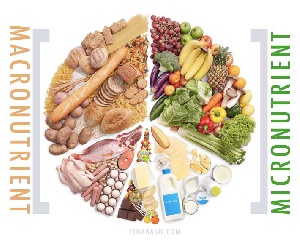 Globally, up to 2 billion people do not get enough essential vitamins and minerals from food
Globally, up to 2 billion people do not get enough essential vitamins and minerals from food
Lack of key nutrients in food impedes growth
For years, boosting agricultural production was believed to be the solution to world hunger and malnourishment. But years of intensive farming with chemical fertilizers and pesticides has done little to move the needle on food insecurity, health metrics or life expectancy.
Today, experts have identified a new kind of hunger—one caused not by lack of food but by food that lacks essential micronutrients necessary for growth and development.
Micronutrients include vitamins and minerals such as iodine, vitamin A, iron, zinc, calcium, and many others.
The effects of micronutrient deficiency can be irreversible. For example, without iodine, children are susceptible to brain damage.
“Its most devastating impacts occur during fetal development and in the first few years of a child’s life,” warns UNICEF, the UN body that handles issues affecting children.
“Micronutrients, though needed in microquantities, its deficiency can condemn a child to lifelong irreversible damage. They would never be able to attain their intellectual, economic and developmental potential,” says Anna Lartey, director of nutrition at the Food and Agriculture Organization, a specialised UN agency that leads efforts to defeat hunger.
Lack of vitamin A is the leading cause of preventable childhood blindness, stunted growth, weakened immunity and high mortality for children under five.
Hidden hunger also leads to acute undernutrition or child wasting, which can be diagnosed in children under five with low height for their age. It affects them at an extremely crucial phase in development.
Globally, up to 2 billion people do not get enough essential vitamins and minerals from food, according to the 2018 Global Hunger Index, which tracks and measures efforts to fight hunger, indicating that many of the affected are in poor countries.
Nearly 48% of Africa’s population relies on cereals and root staples that lack vital micronutrients, according to the New Partnership for Africa’s Development, the implementing arm of the African Union. Millions have no access to or cannot afford foods such as vegetables, fruits, and animal products that are rich in micronutrients.
Possible solutions
To provide adequate micronutrients for children, UNICEF recommends a diverse range of nutrient-dense foods. It also recommends that children be breastfed.
Biofortification is another effective remedy, experts say. The World Health Organisation (WHO) describes biofortification as “a process by which the nutritional quality of food crops is improved through agronomic practices, conventional plant breeding, or modern biotechnology.”
The process usually targets the three crucial nutrients—iron, zinc and vitamin A—that are the most limited in the diets of populations across Africa.
Researchers and nutritionists are optimistic about the impact and cost-effectiveness of biofortification.
“It is a complementary intervention that can reach many people in the rural areas more easily, and has the advantage of being more sustainable,” says Dr. Natalia Palacios, maize nutritional quality specialist at the Kenya-based International Maize and Wheat Improvement Center. “Farmers and their families can benefit directly from a micronutrient-enhanced diet.”
WHO has yet to officially endorse biofortification, stating on its website that more research is needed. Nevertheless, by the end of 2017, about 6.7 million households globally had benefited from biofortified crops, of which 5 million households were in Africa.
HarvestPlus, a Washington D.C.–based organisation that seeks to reduce hidden hunger, is working with private and public sectors to implement biofortification in Africa.
Biofortification is also an objective in the Comprehensive African Agricultural Development Programme (CAADP), a framework adopted in 2003 by African leaders that requires countries to invest at least 10% of their budgets in agriculture.
Farmers in 13 African countries, including Democratic Republic of the Congo, Nigeria, Rwanda, Uganda, Zambia and Zimbabwe, are already growing biofortified crops and have incorporated them into their national nutrition policies and programmes. Thirty-eight other countries, including Angola, Ethiopia, Egypt, Ghana, Kenya, Mali and Zambia, are carrying out tests.
“Research has shown positive health impacts of vitamin A in maize and sweet potatoes in local systems, as well as the ability to scale up,” says Dr. John McDermott, director of the Research Program on Agriculture for Nutrition and Health at CGIAR, a global network of organizations engaged in research on food security.
Dr. McDermott added that “similar evidence for iron in beans and pearl millet show effectiveness and scalability of iron in plant sources, and we are working to show the same for zinc.”
Limitations of biofortification
Despite its touted merits, biofortification has its limits, including that some members of a target population will not consume a fortified foodstuff, even when exposed to the increased levels of micronutrients in food, according to WHO.
Also, infants and young children consuming relatively small amounts of food may not get enough micronutrients from fortified staples alone.
Poorer families often have multiple micronutrient deficiencies at once. While multiple micronutrient fortification is possible, these families may not be able to get recommended intakes of all micronutrients from fortified foods alone.
“Although more cost-effective than other strategies, there are nevertheless significant costs associated with the food fortification process, which might limit the implementation and effectiveness of food fortification programmes in developing [countries] like India,” notes WHO.
The current funding for biofortification in Africa is restricted to adding the nutrient trait into already growing crop pipelines as opposed to including the nutrient trait right at the onset of plant breeding work. The current approach may not be sustainable in the long term, experts warn.
Also, weak seed and market systems in Africa continue to impede delivery to farmers of biofortified crops from which seeds can be obtained. Effective engagement between research and development institutions will likely address this weakness, posit biofortification researchers.
In sum, biofortification may not eradicate hidden hunger entirely, but it just might be an effective shield against hunger pangs in Africa.
Africa Renewal